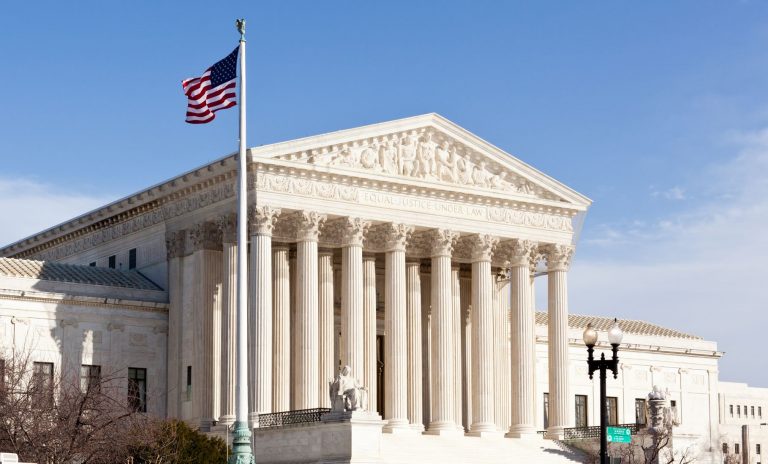Supreme Court Opens Door for Personal Injury Suits Against Auto Manufacturers
Supreme Court Opens Door for Personal Injury Suits Against Auto Manufacturers
High Court Rules that Manufacturer’s Choice not an Obstacle to Regulatory Objective With Regards to Rear Seat Belts
Auto manufacturers and their counsel have been anxiously awaiting the U.S. Supreme Court’s ruling on Williamson v. Mazda Motor of America, Inc., 562 U.S. ___ (2011). On February 23, 2011, the U.S. Supreme Court unanimously decided that a federal motor vehicle safety regulation did not pre-empt state torts arising from rear seat belt defect allegations. The case arose from the death of Thanh Williamson, a passenger in the rear aisle seat of a Mazda minivan who was killed in a head on accident. Williamson’s family and estate filed a product liability suit in California state court alleging that Mazda should have installed lap and shoulder belts rather than only a lap belt. The trial court dismissed the case on the basis that FMVSS 208, which provides manufacturers with a choice of installing lap and shoulder belts or only lap belts in rear inner seats, pre-empted the lawsuit. The California Court of Appeal affirmed the dismissal relying upon Geier v. American Honda Motor Co., 529 U.S. 861 (2000), in which the Supreme Court held that another portion of FMVSS 208 providing manufacturers with a choice of whether to utilize passive restraint systems other than airbags pre-empted any state tort suit based upon the manufacturer’s decision not to use air bags. However, the Court, using the same analysis it did in Geier, came to the opposite conclusion.
In reaching its decision, the Court first identified the subsidiary questions it created in Geier to address the pre-emption question:
(1) whether the statute’s express pre-emption provision pre-empts the state tort suit;
(2) whether the statute’s saving clause forecloses operation of ordinary pre-emption principles (i.e. federal statutes pre-empt state laws that actually conflict with the federal law); and
(3) whether the state tort action, in fact, conflicts with the federal regulation.
The Court explained that since this case and Geier involve the same regulation, the answers to the first two questions are the same as in Geier, so the only remaining issue was whether Williamson’s lawsuit stands as an “obstacle to a significant regulatory objective.” The Court held that it did not.
The Court explained that to determine whether the suit was an obstacle to the accomplishment of a significant federal objective, it was necessary to review the regulatory objectives as well as the agency’s current position on pre-emption. The Court then contrasted the regulatory history and Attorney General’s position about the FMVSS 208 provision at issue in Geier with the regulatory history and Attorney General’s position regarding the seatbelt choice provision of FMVSS 208 relied upon by Mazda. The Court found that it was clear that the DOT intended to make “manufacturer choice” an important means for achieving its objectives regarding passive restraint systems. Further, in Geier, the Attorney General advised that a tort suit insisting upon the use of air bags as opposed to the other permissible passive restraint systems would stand as an obstacle to allowing manufacturer choice, which was an important means for achieving the DOT’s basic objectives.
By contrast, in Williamson, the Court found that providing manufacturers with a choice of seatbelt design to use with inner rear seats was not a significant objective of FMVSS 208. In reaching this conclusion, the Court pointed out the regulatory history shows that the DOT was convinced that lap and shoulder belts would increase safety, but was concerned about the additional costs. The Court explained that while an agency could base a pre-emption decision on the cost effectiveness, no such intent was evidenced in the rule making record of the FMVSS 208 provision at issue. The Court noted that finding pre-emption based solely upon the DOT’s determination of cost effectiveness could in essence transform all federal standards into maximum standards and eliminate the possibility that the agency sought only to set forth a minimum standard which could be supplemented through state tort law. The Court also pointed out that the DOT’s current position, according to the Attorney General, was that the regulation did not pre-empt Williamson’s tort suit. The Court concluded that even though Williamson’s tort suit may restrict the manufacturers’ choice, the restriction was not an obstacle to the accomplishment of the full purposes and objectives of federal law and, therefore, FMVSS 208 does not pre-empt the lawsuit.
The Williamson decision is a significant one for automotive manufacturers. First, any manufacturer who chose to utilize lap belts instead of lap and shoulder belts in rear inner seats may now be subject to tort liability that did not exist at the time the vehicles were designed. Additionally, now when a federal regulation provides manufacturers with a choice, the manufacturer will have to engage in a significant review of the regulatory history to determine whether preserving the manufacturer’s choice was a significant objective of the regulation, or if the regulation merely prescribes a minimum standard. Further, the manufacturer will have to engage in speculation regarding the agency’s future position regarding the pre-emptive effect of the regulation. Justice Thomas’ concurring opinion addresses the absurdity and uncertainty created by “the majority’s purposes and objectives pre-emption analysis.”






